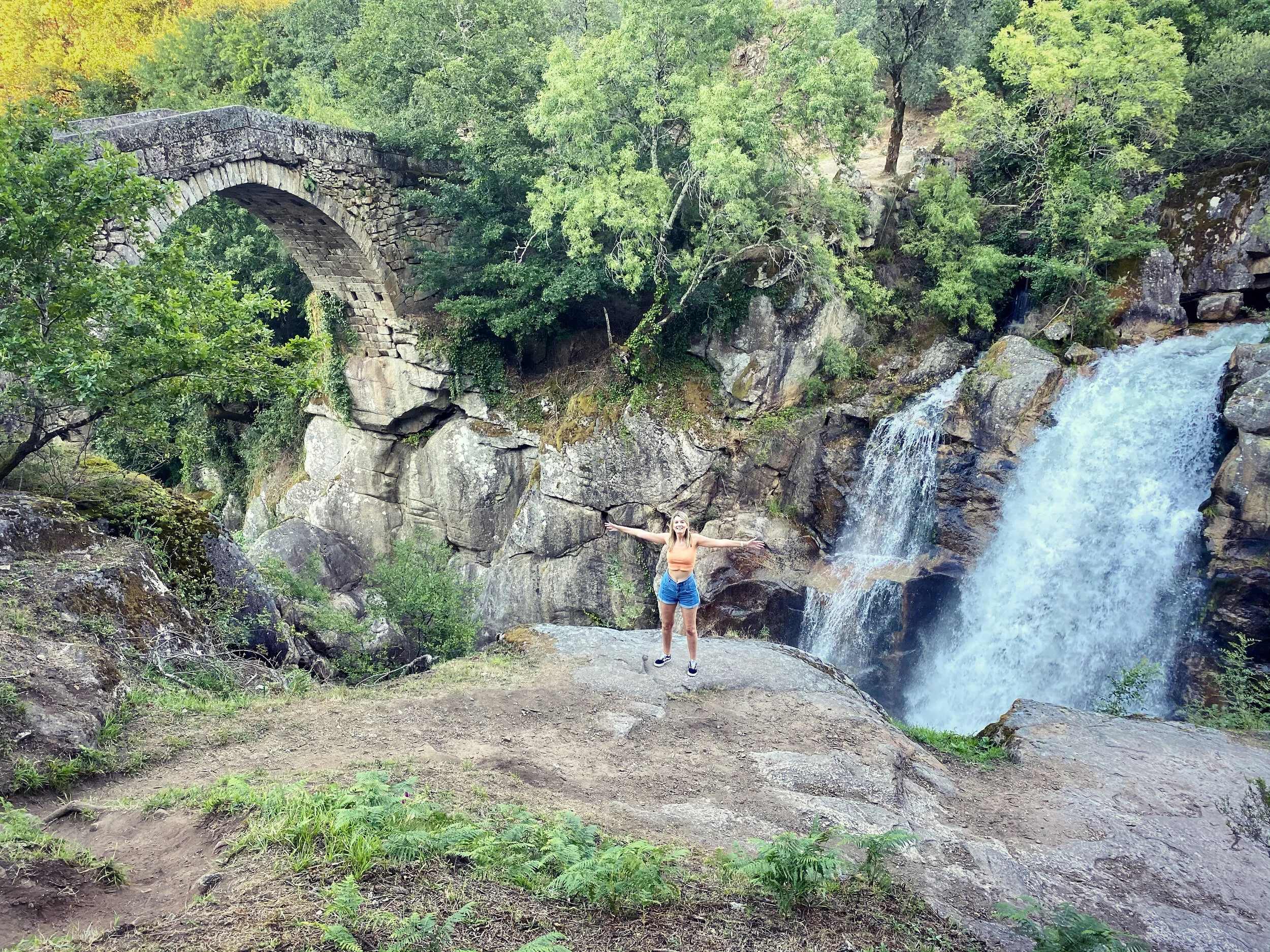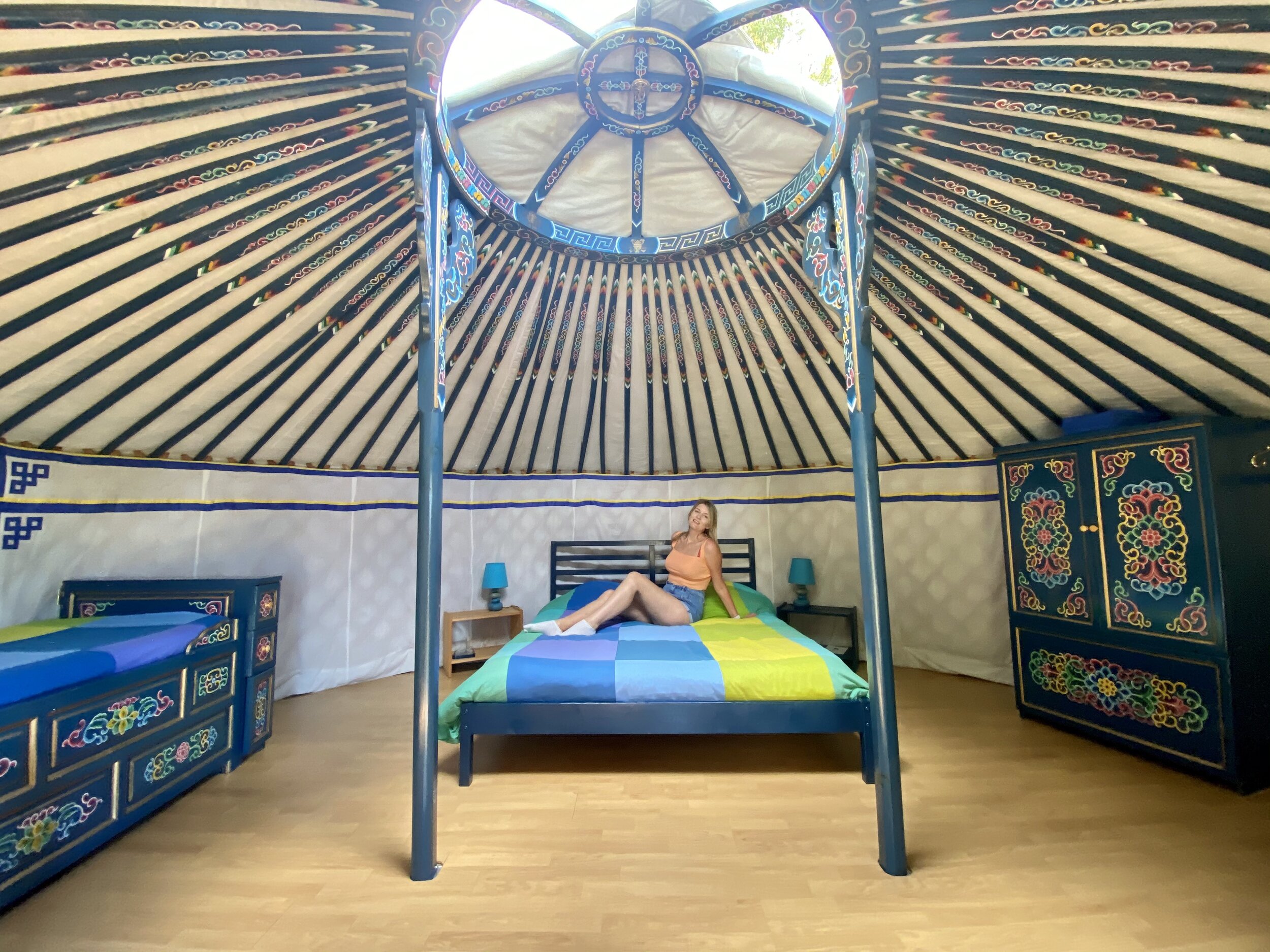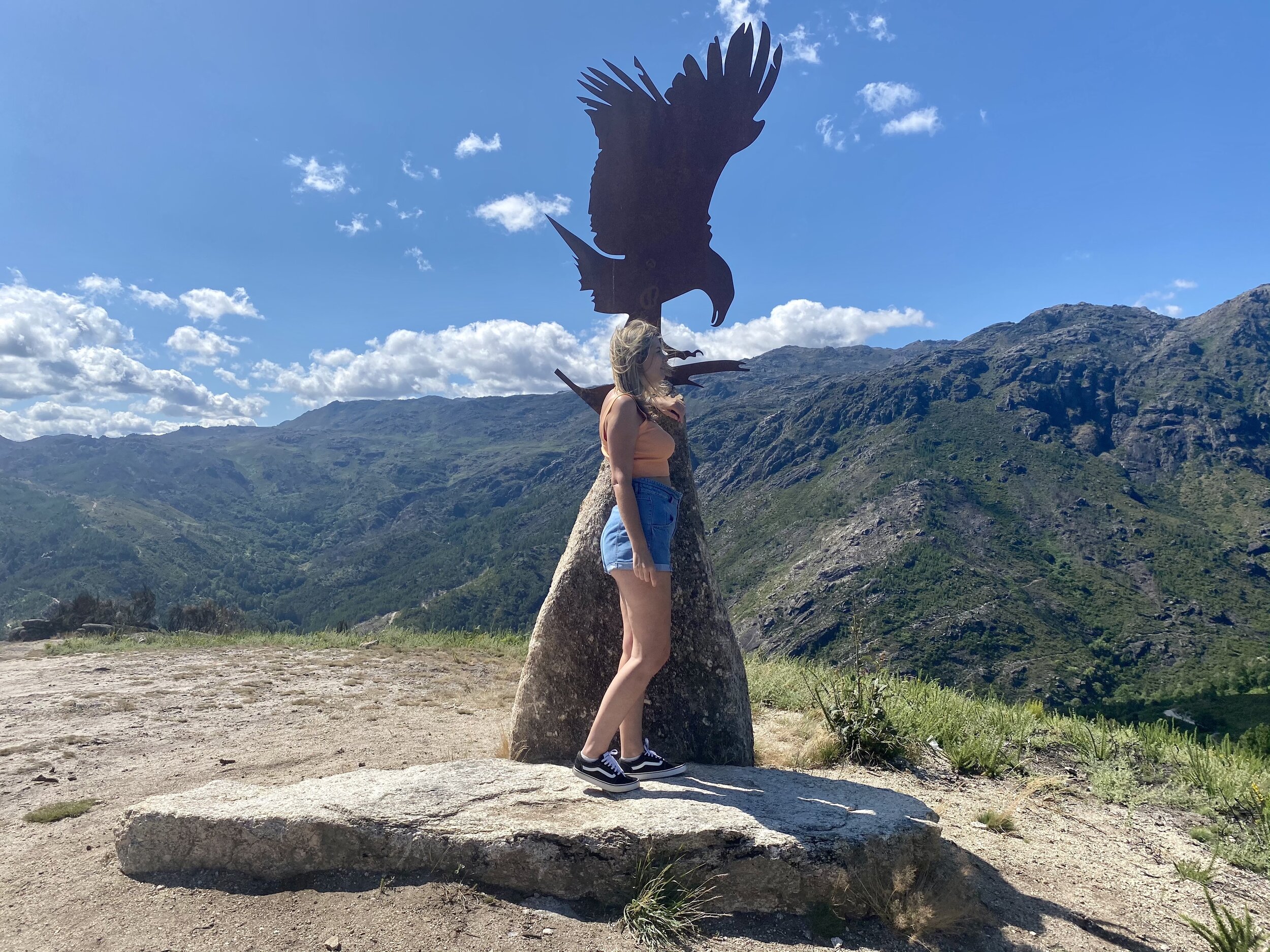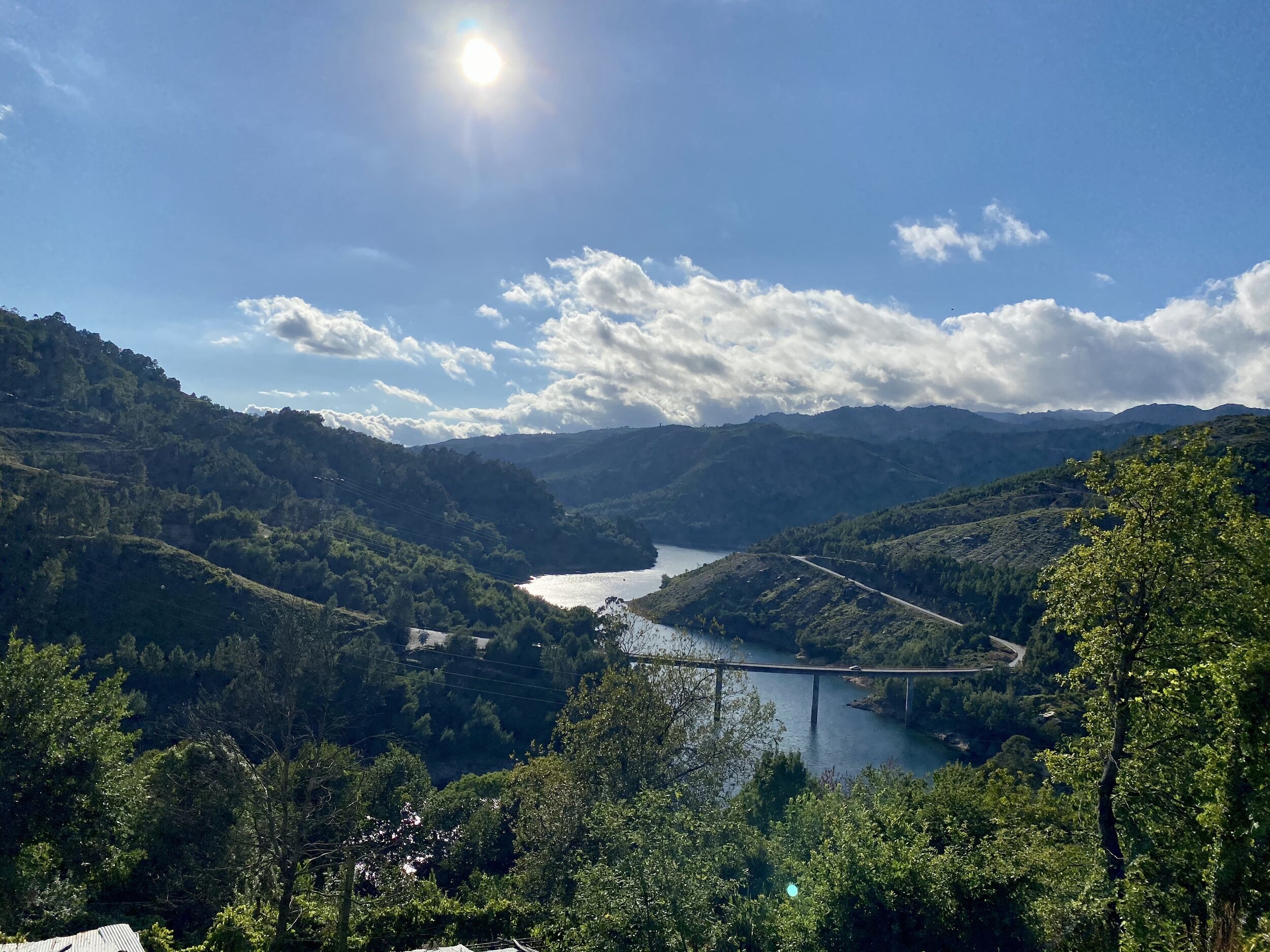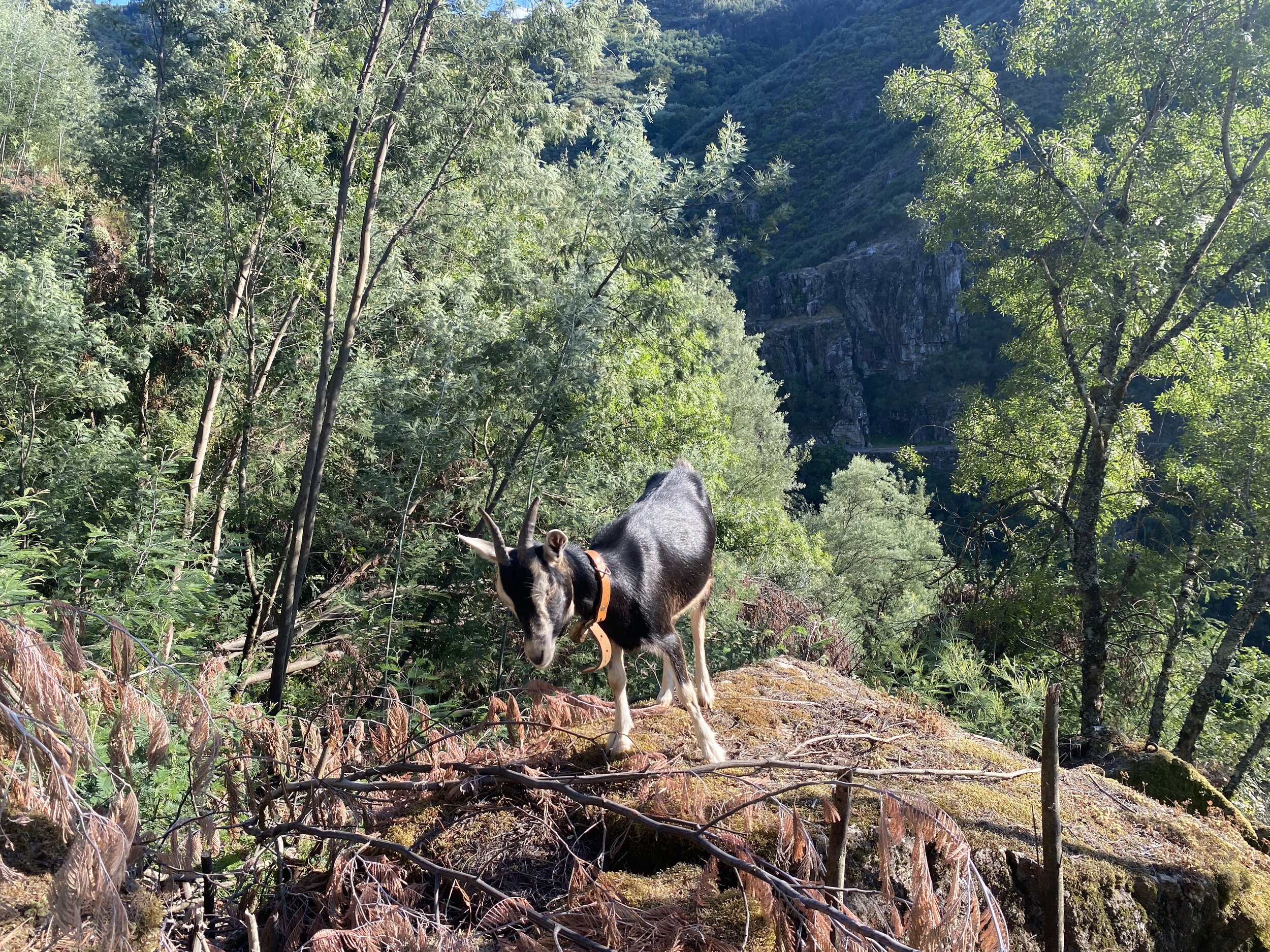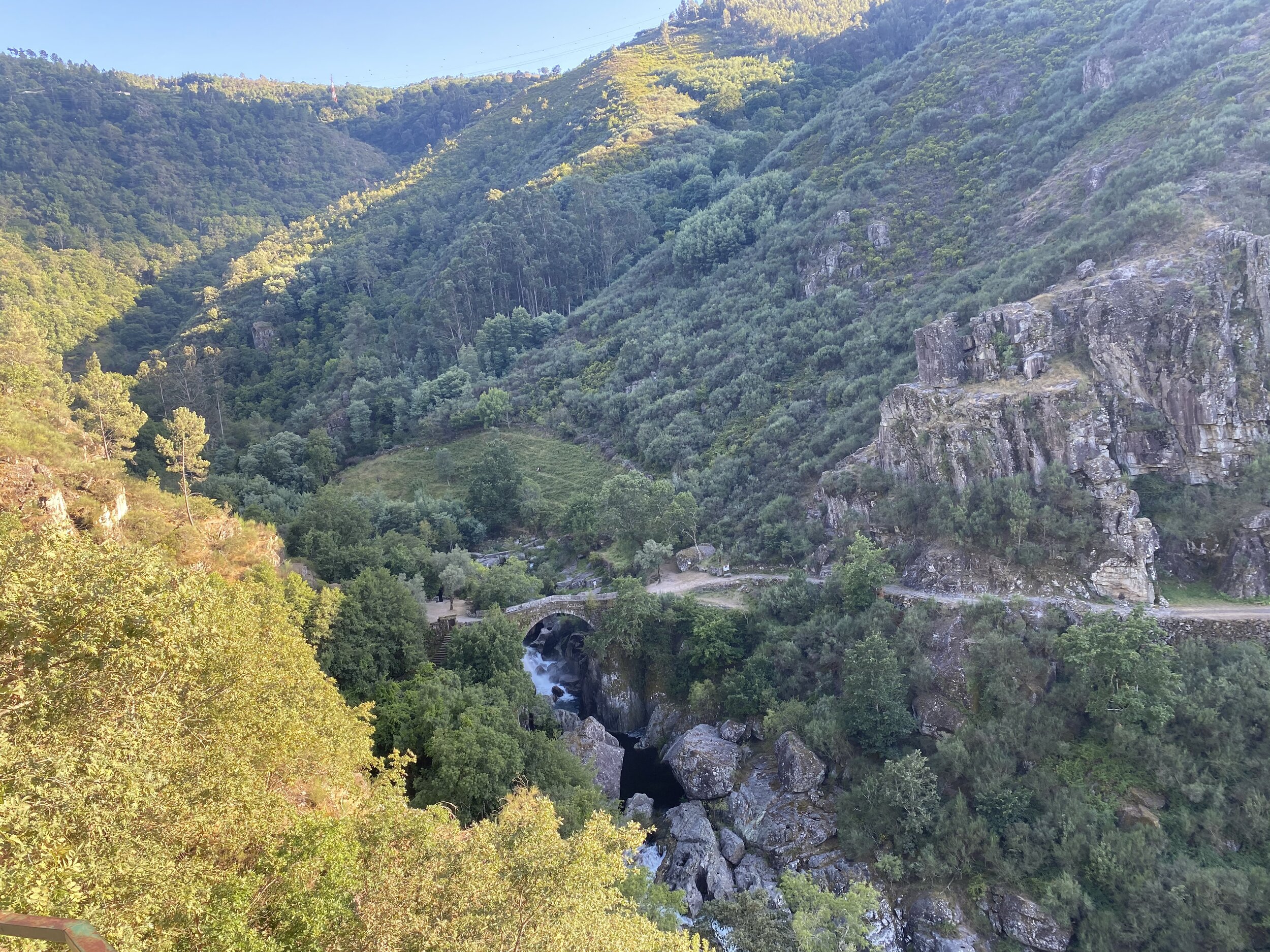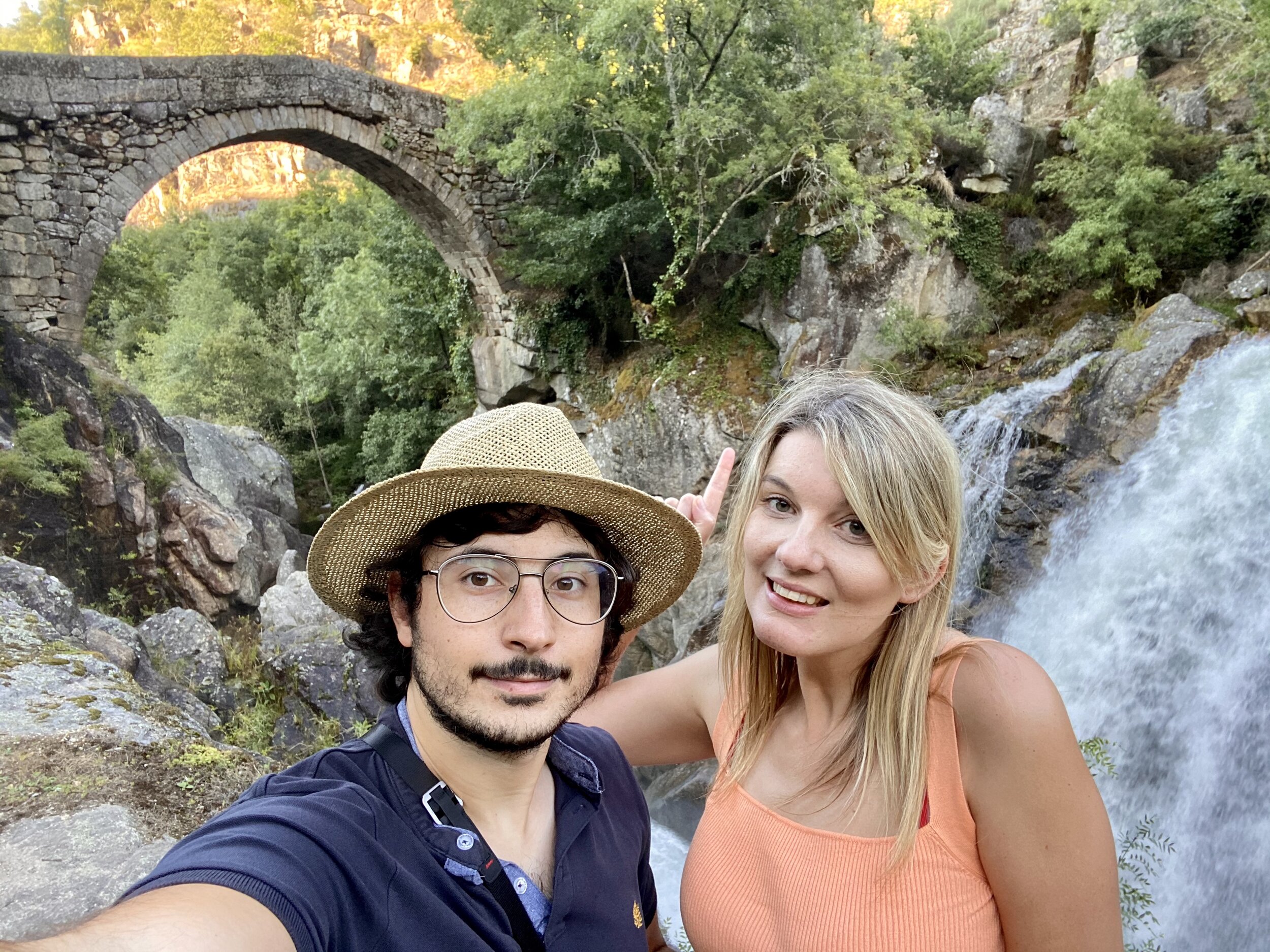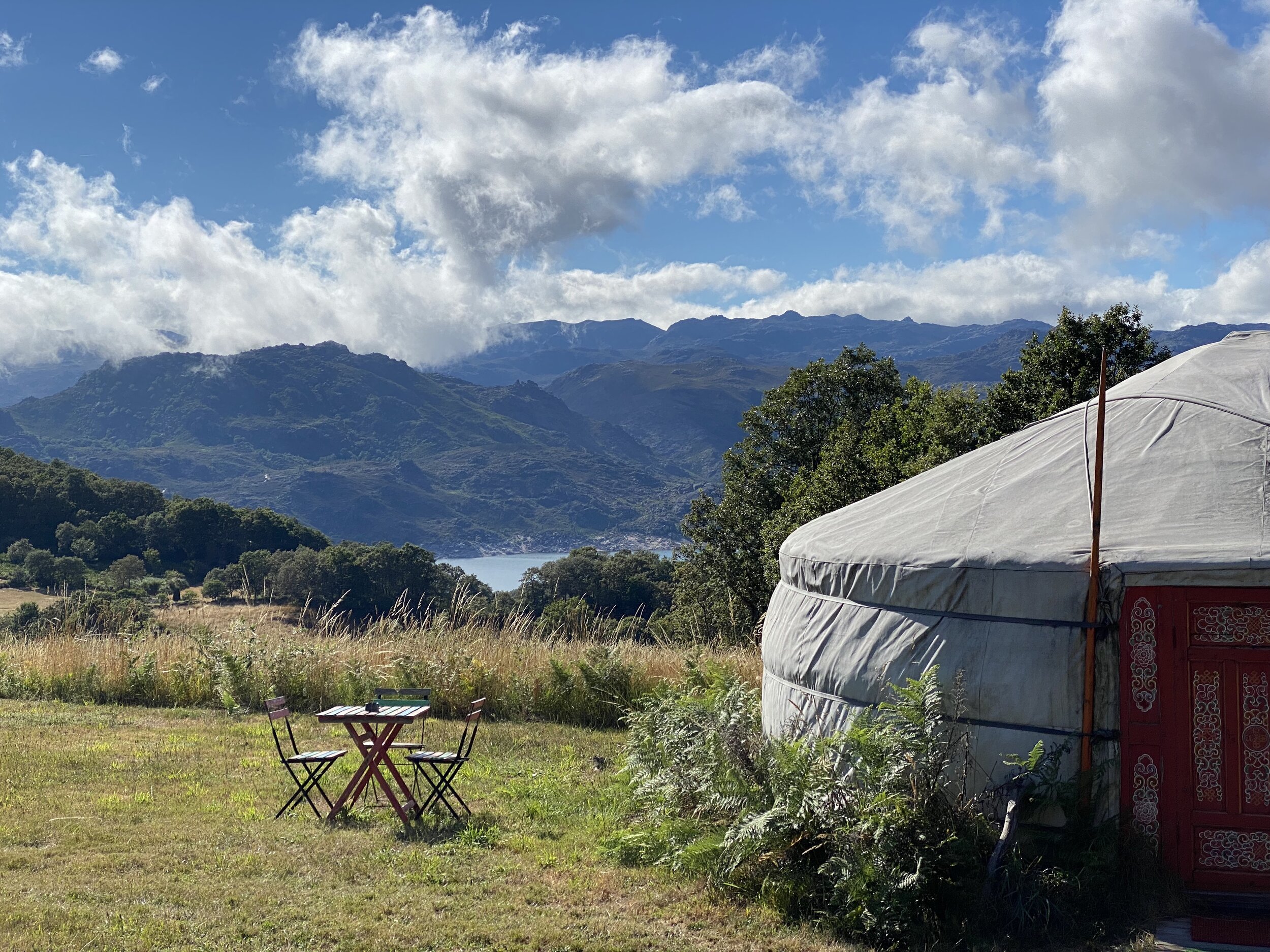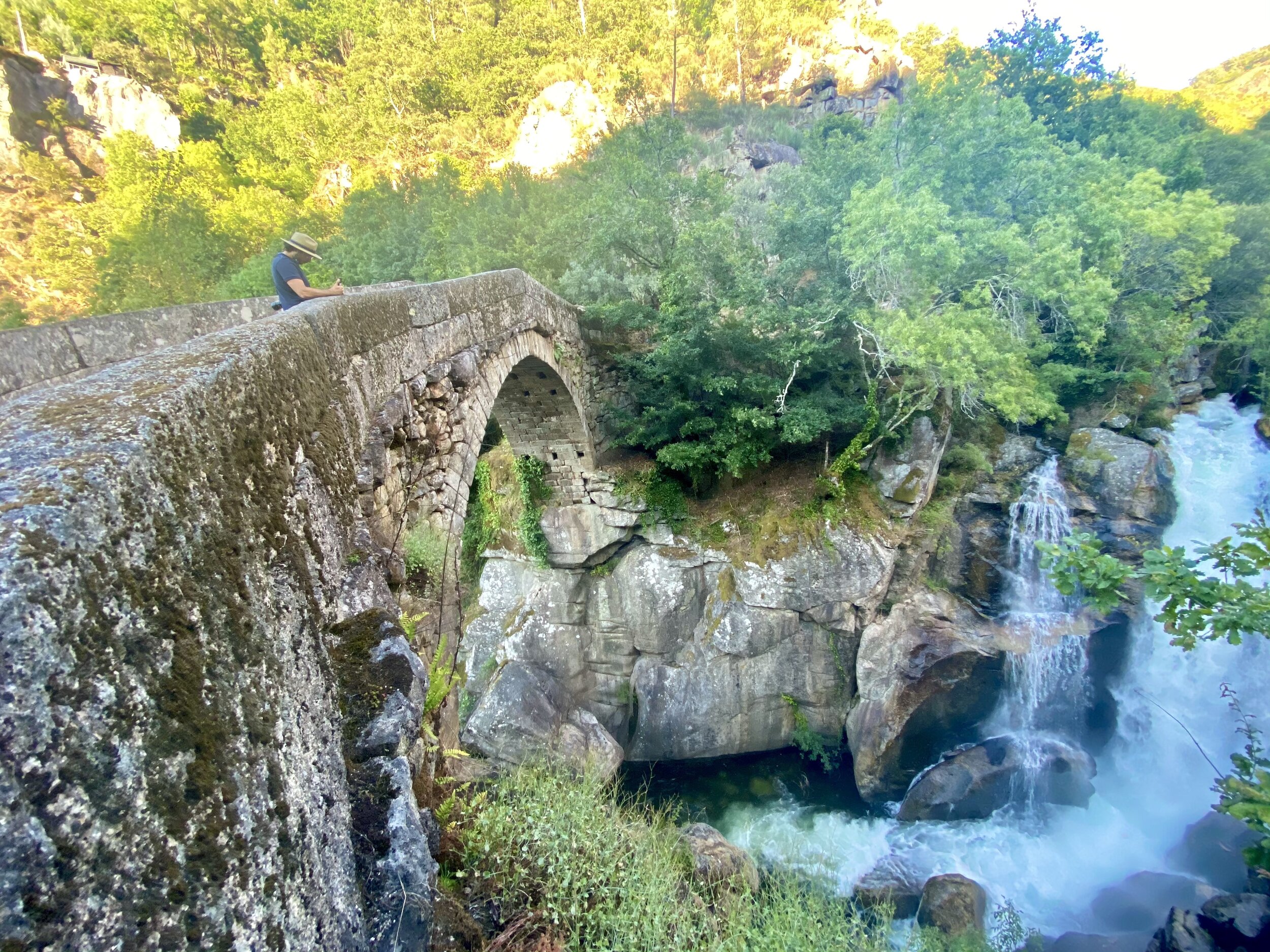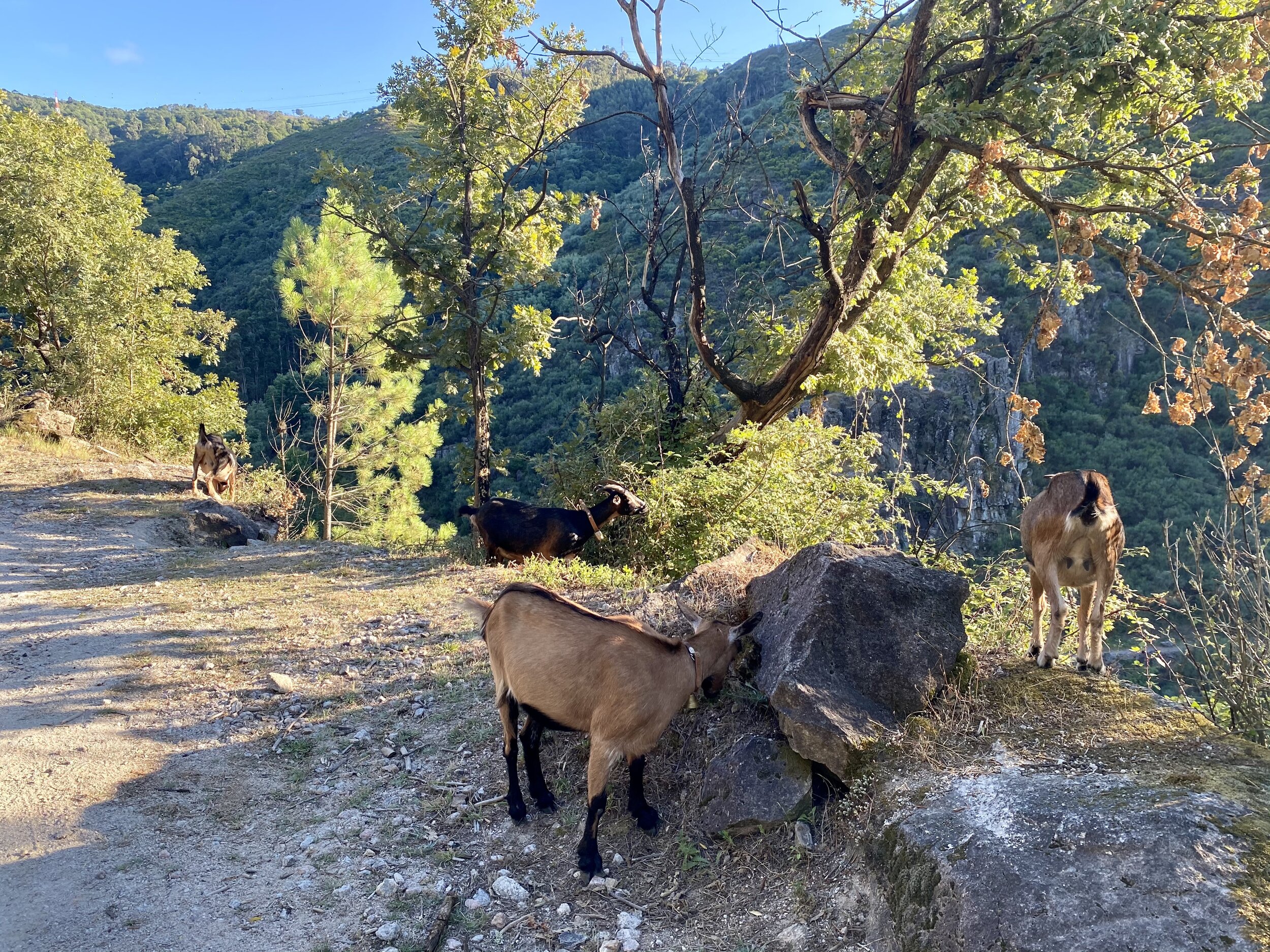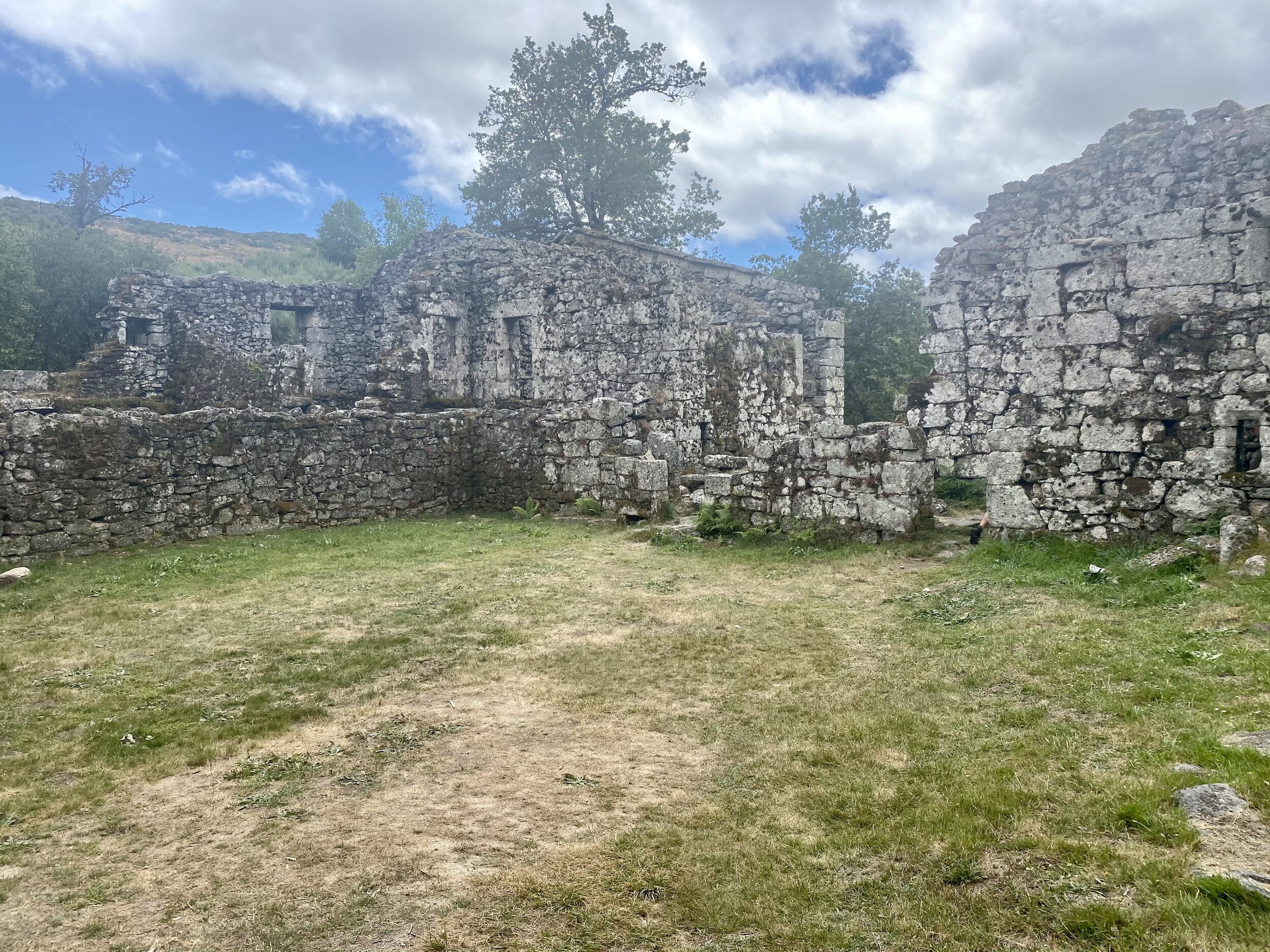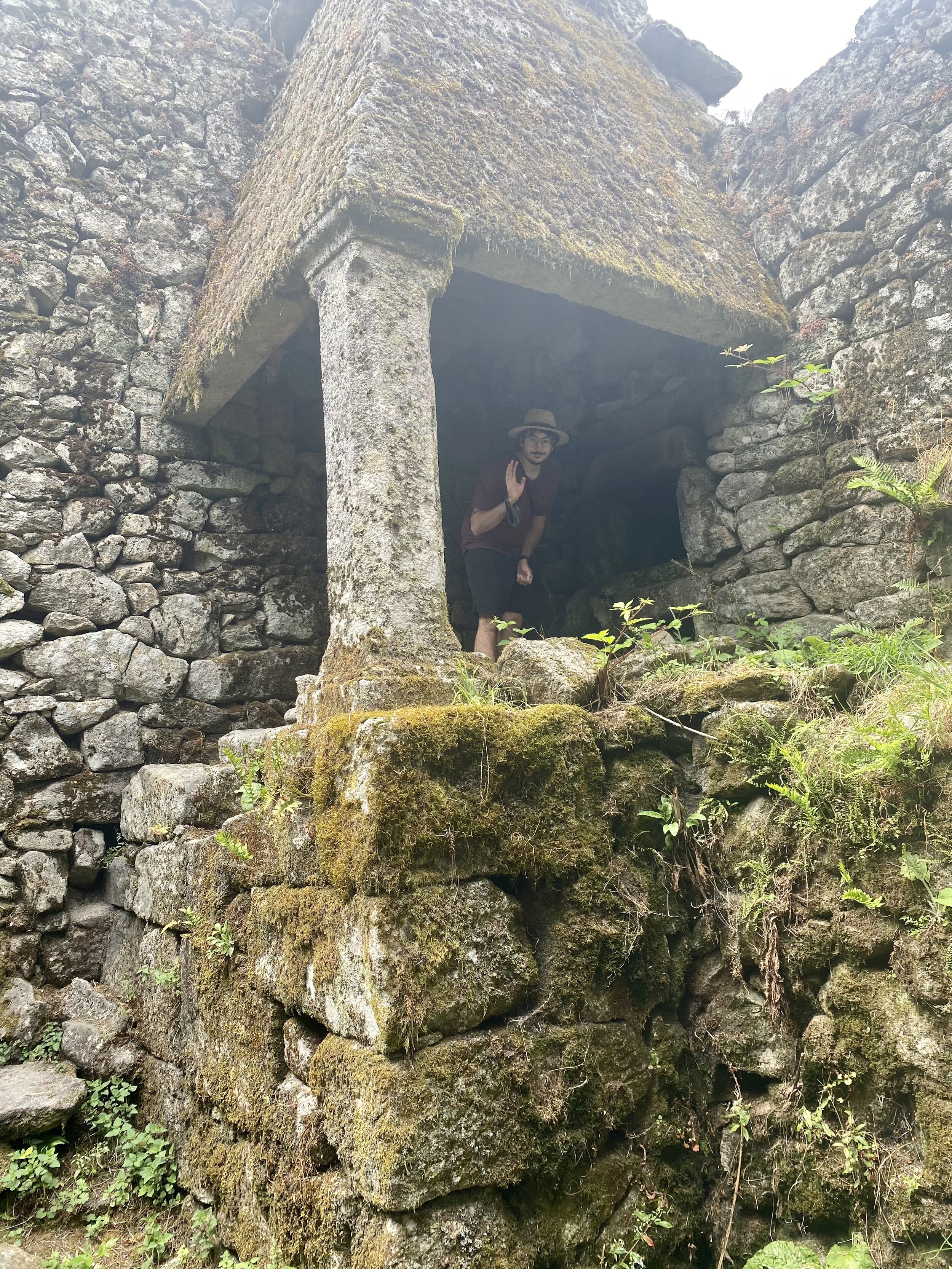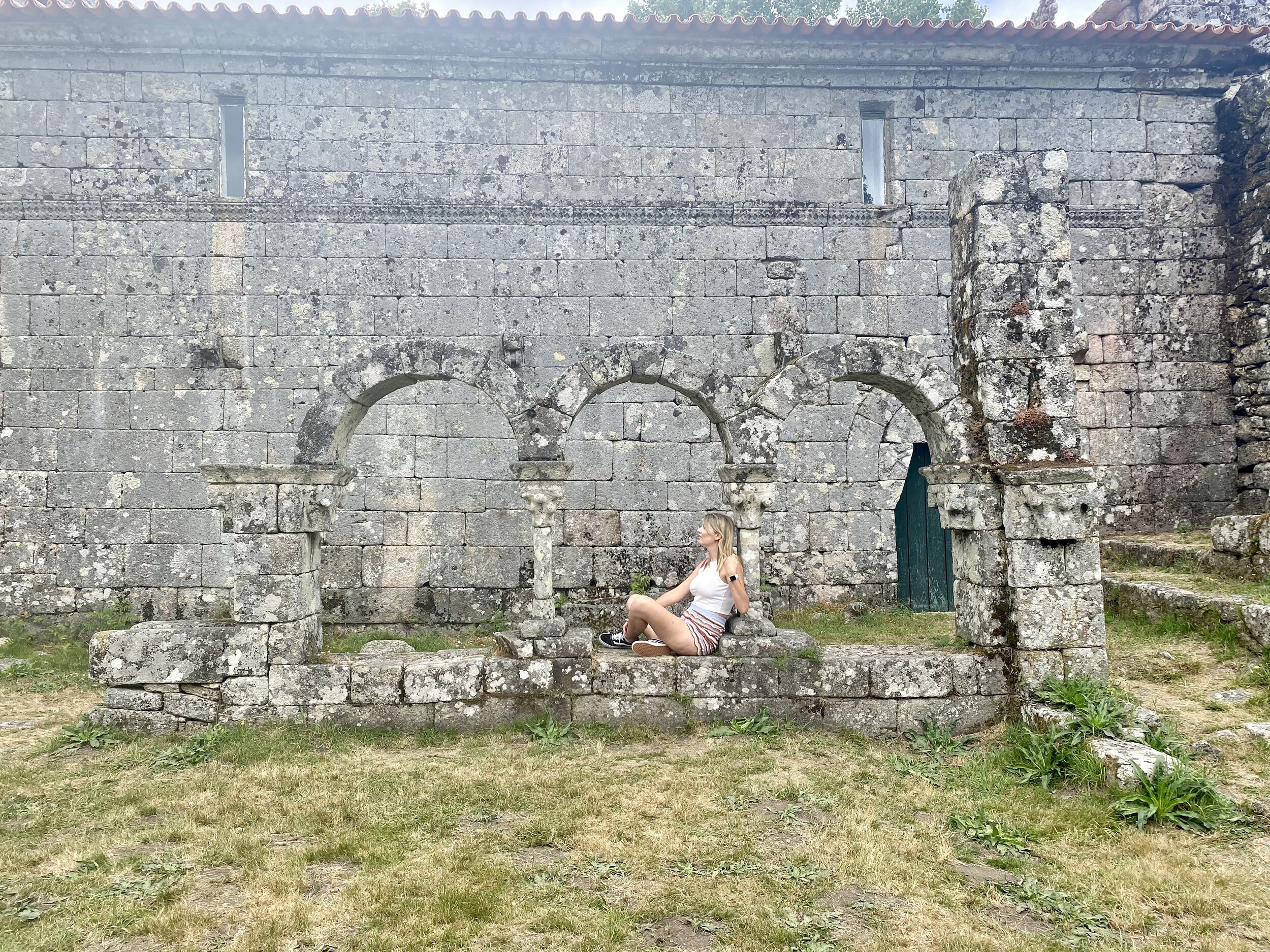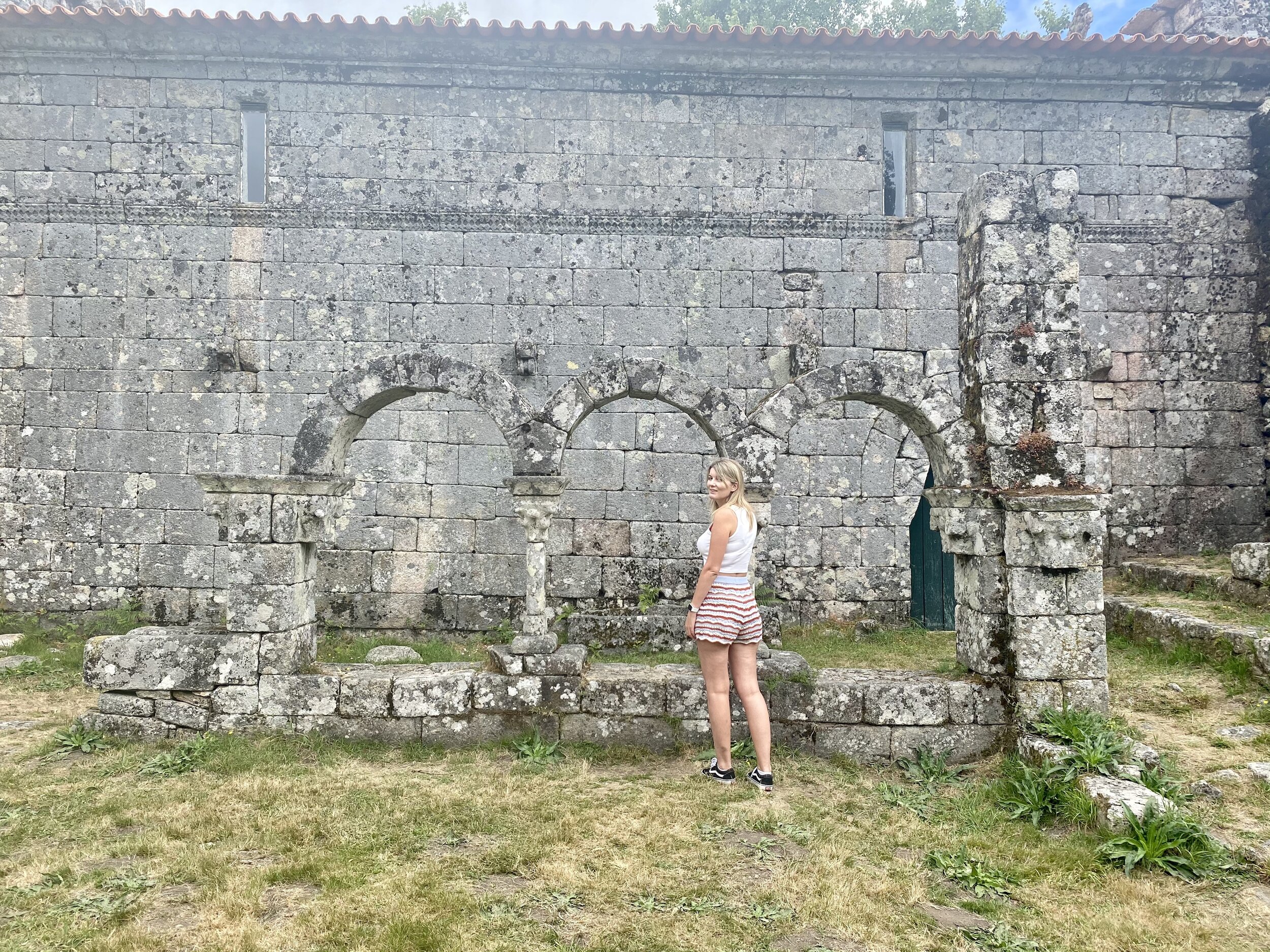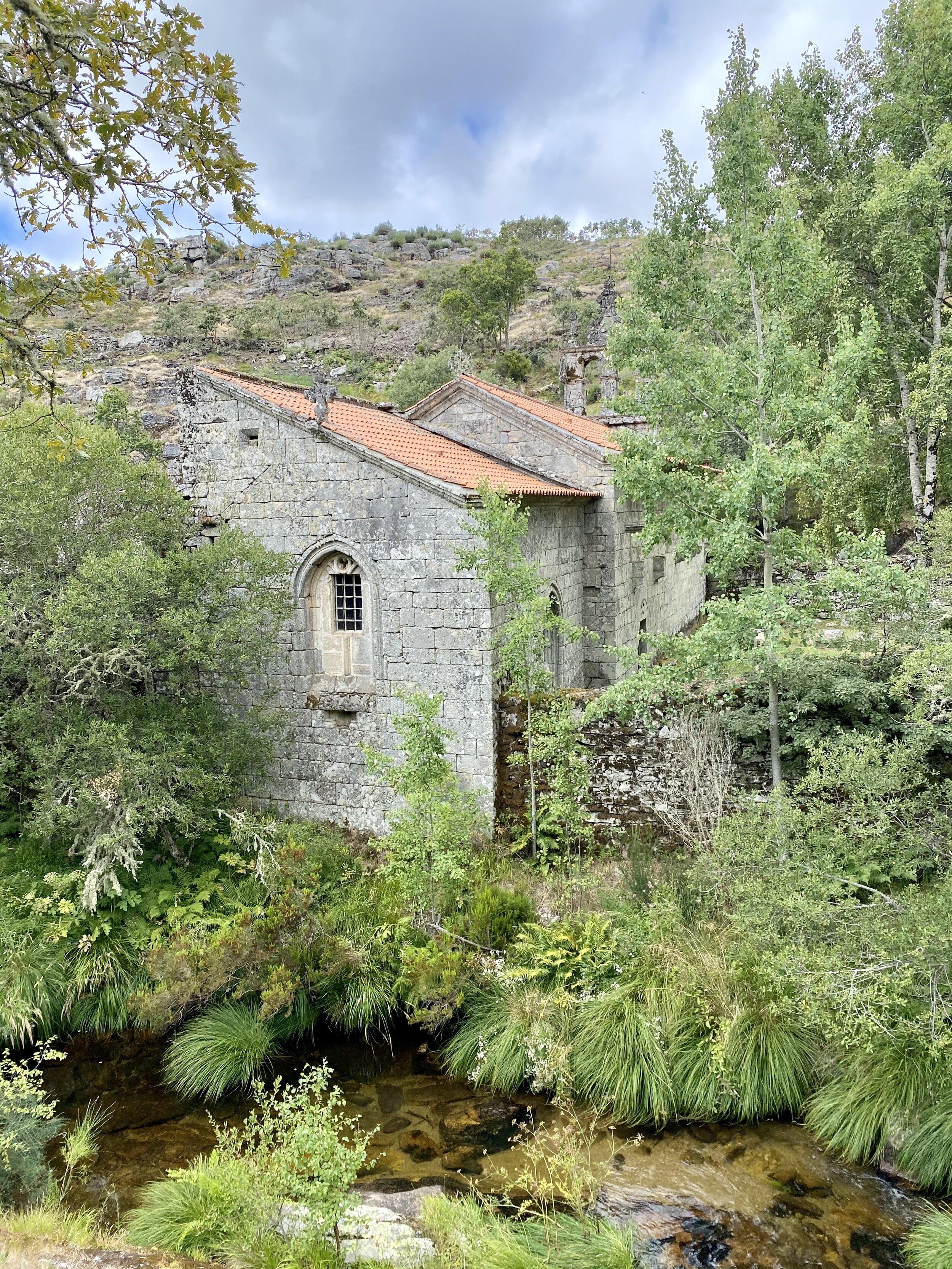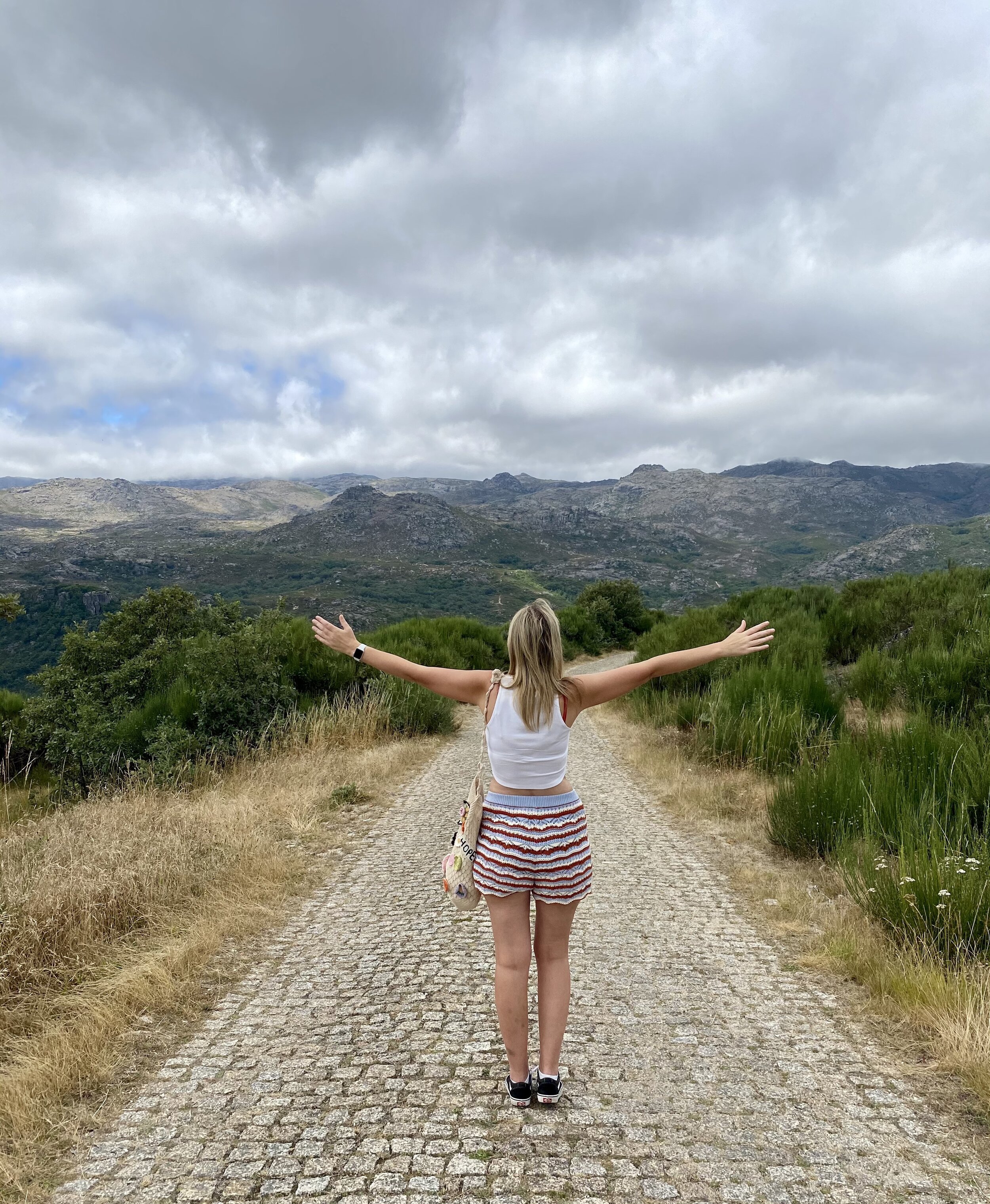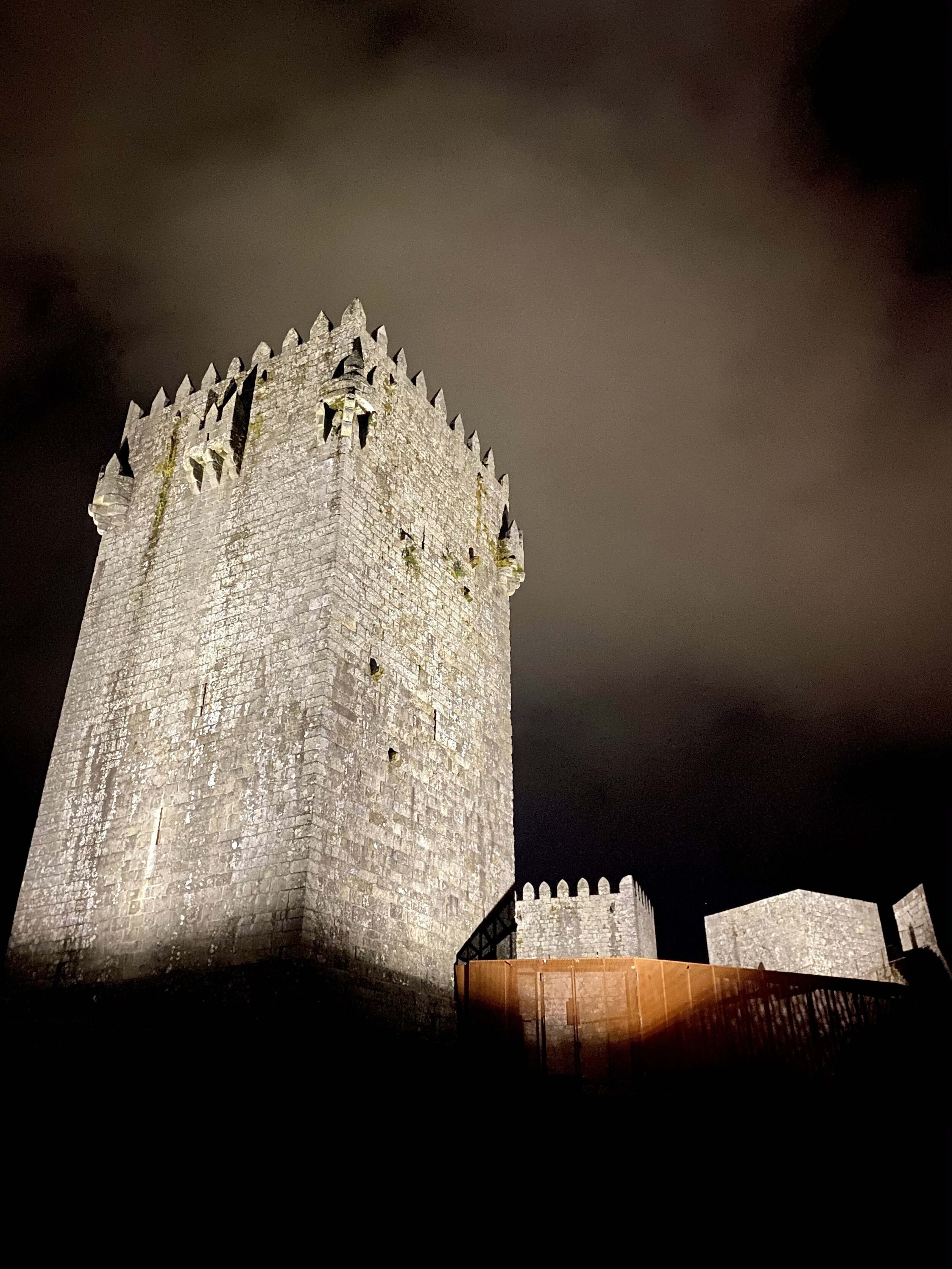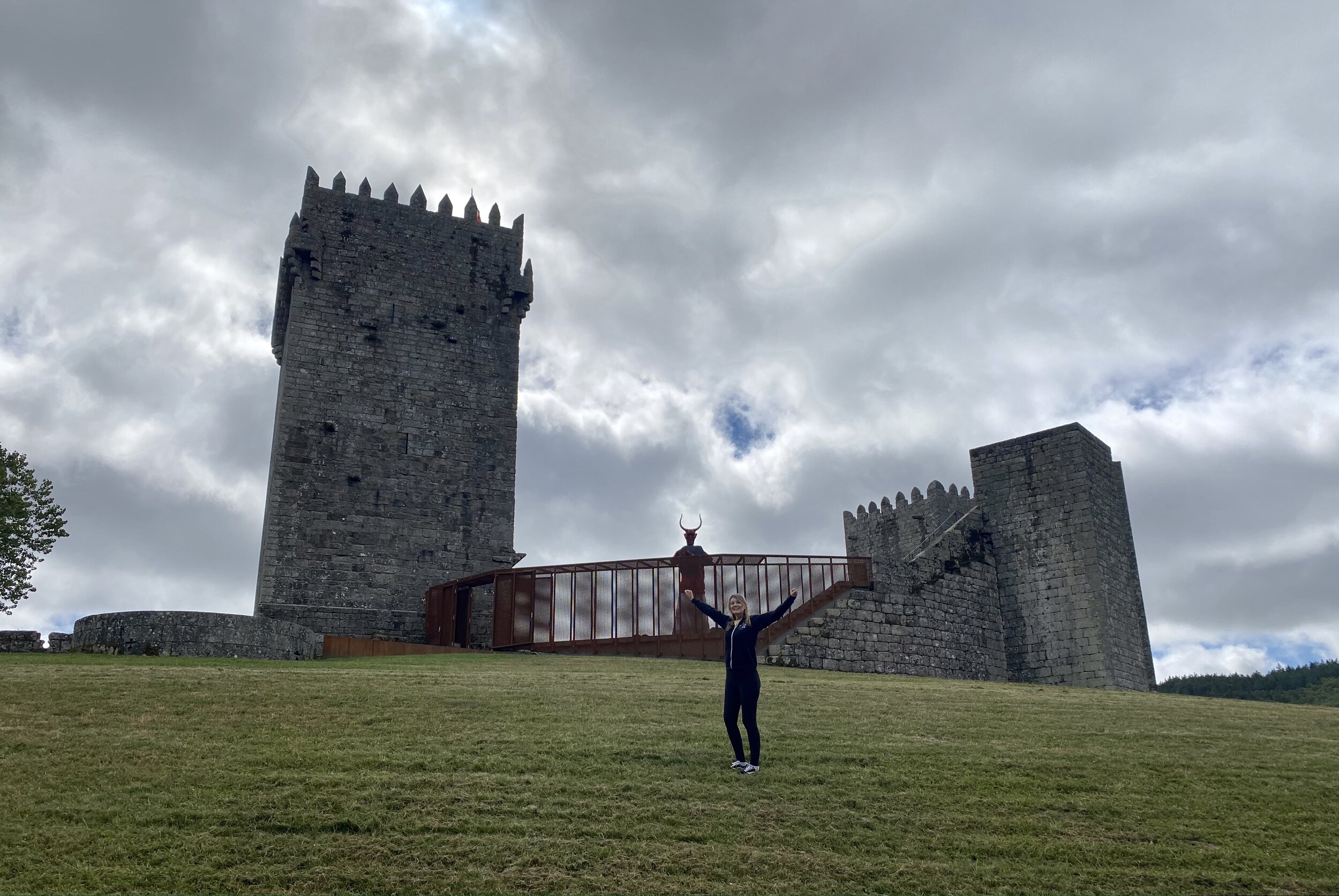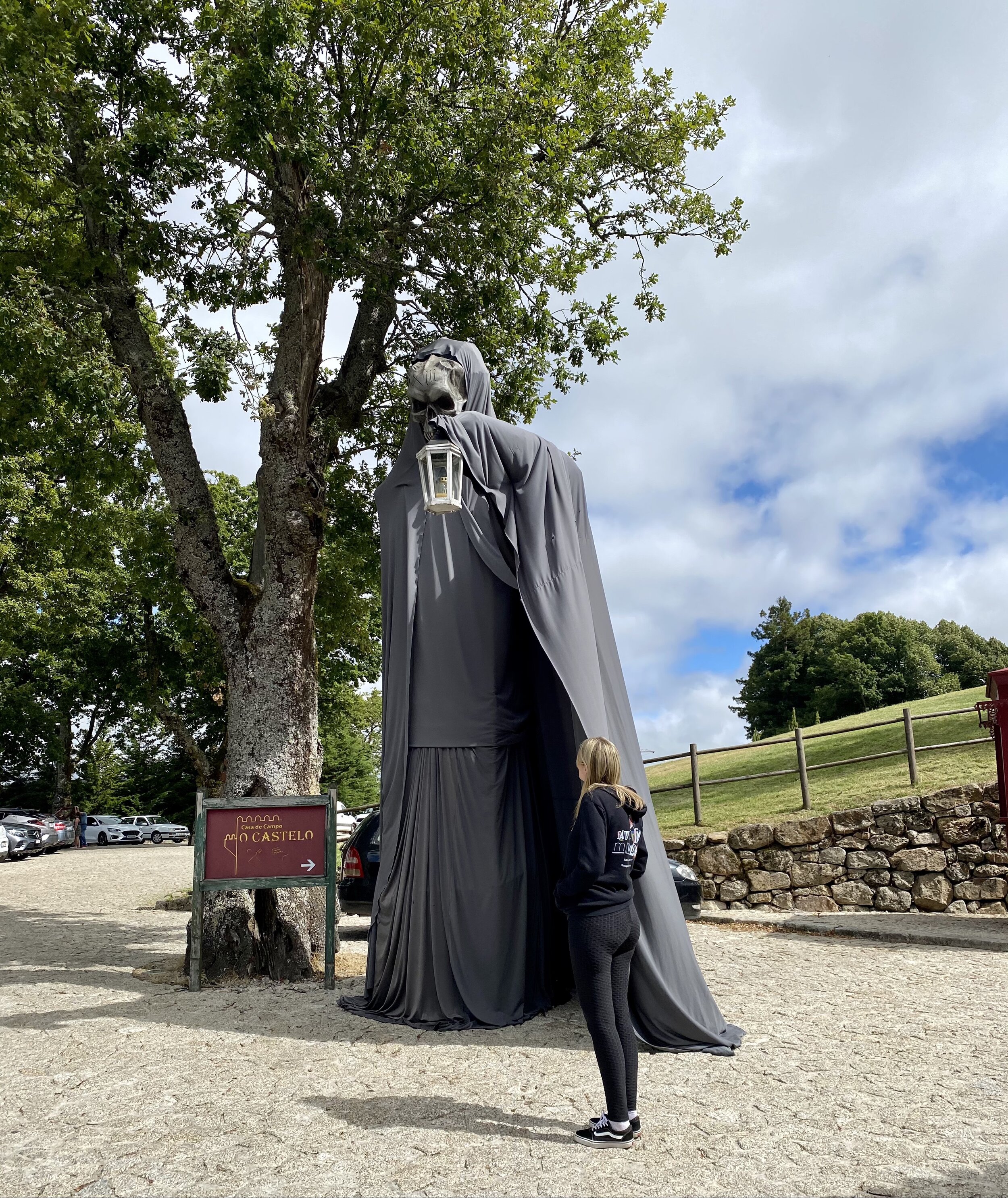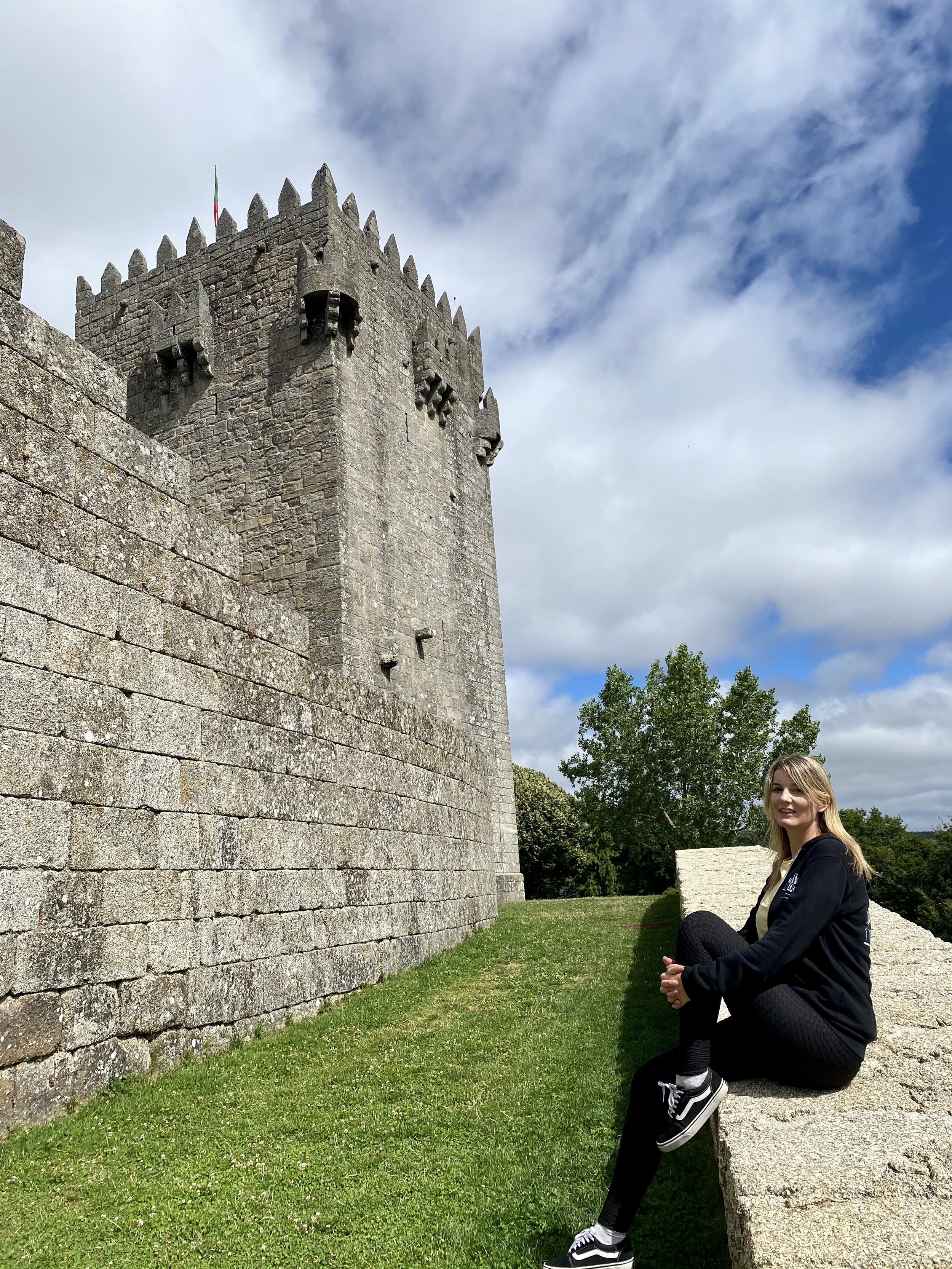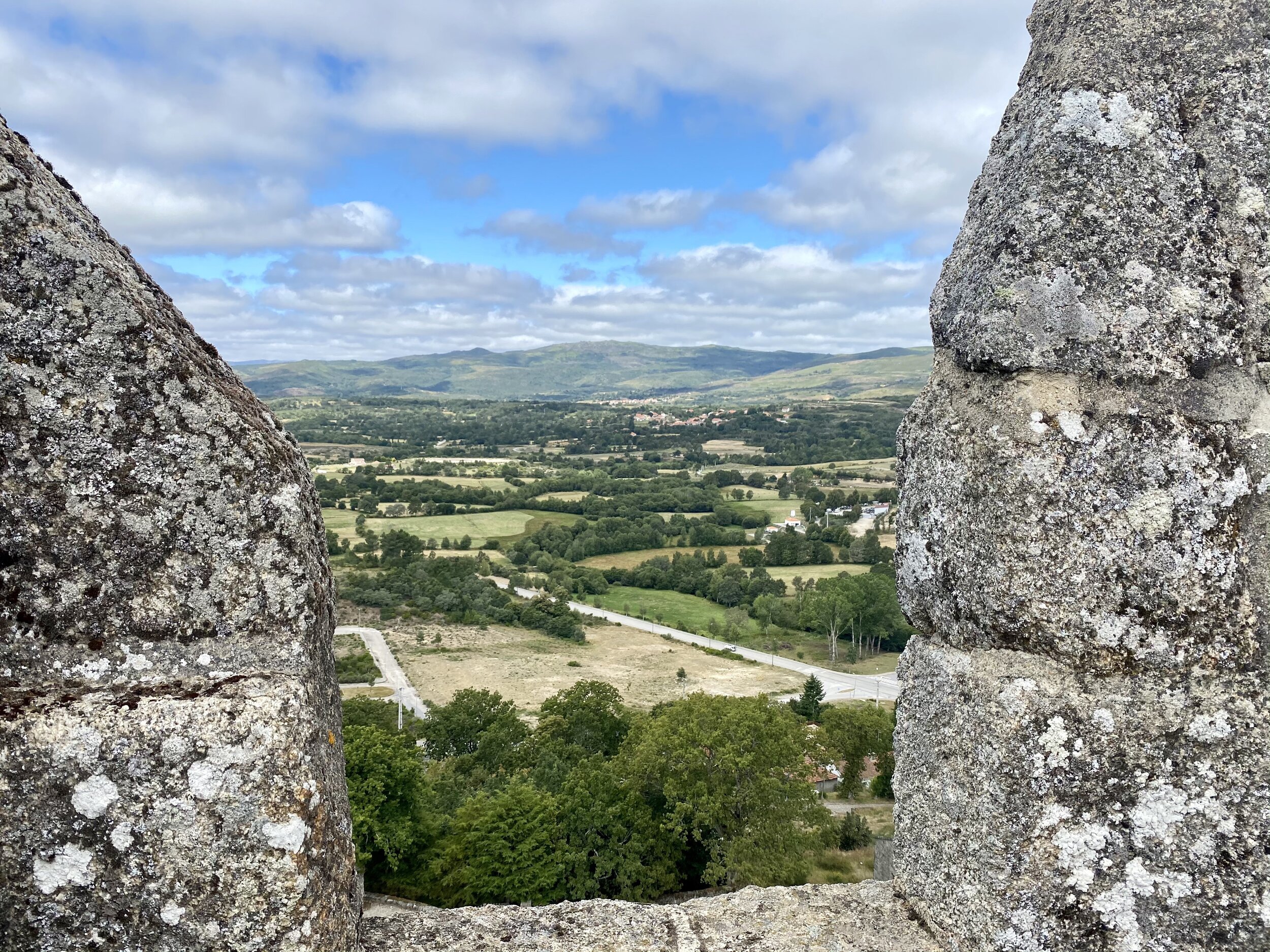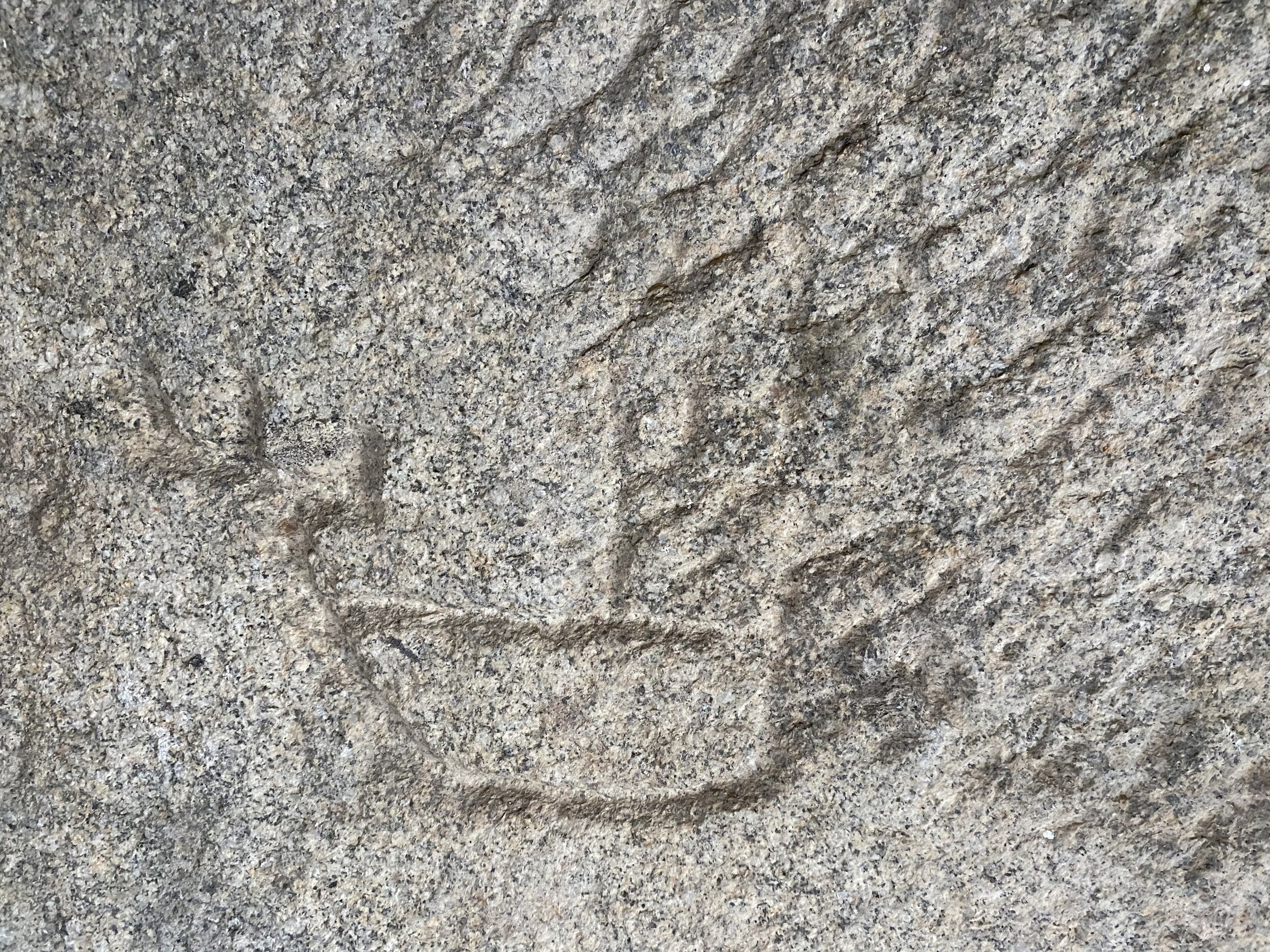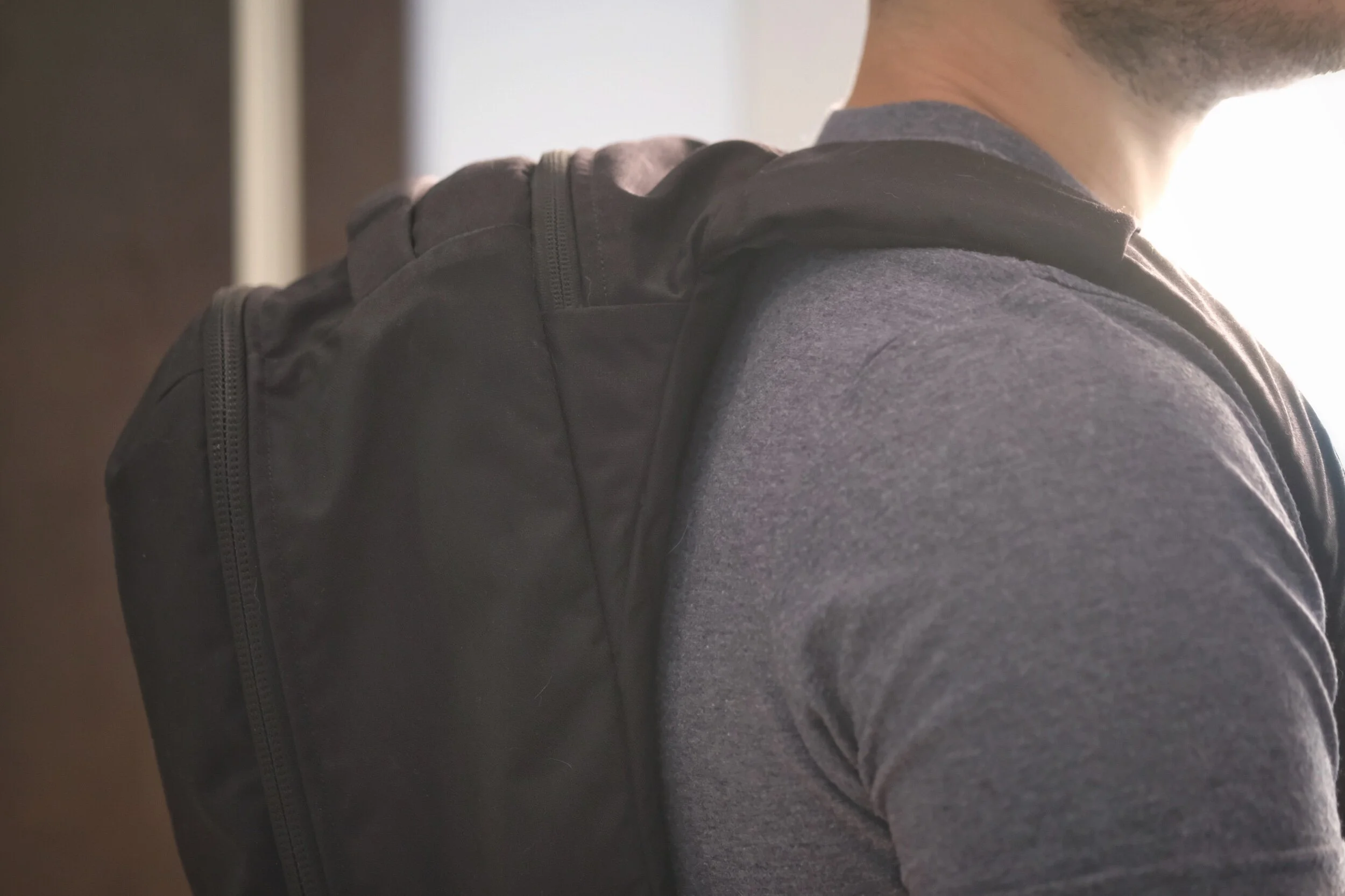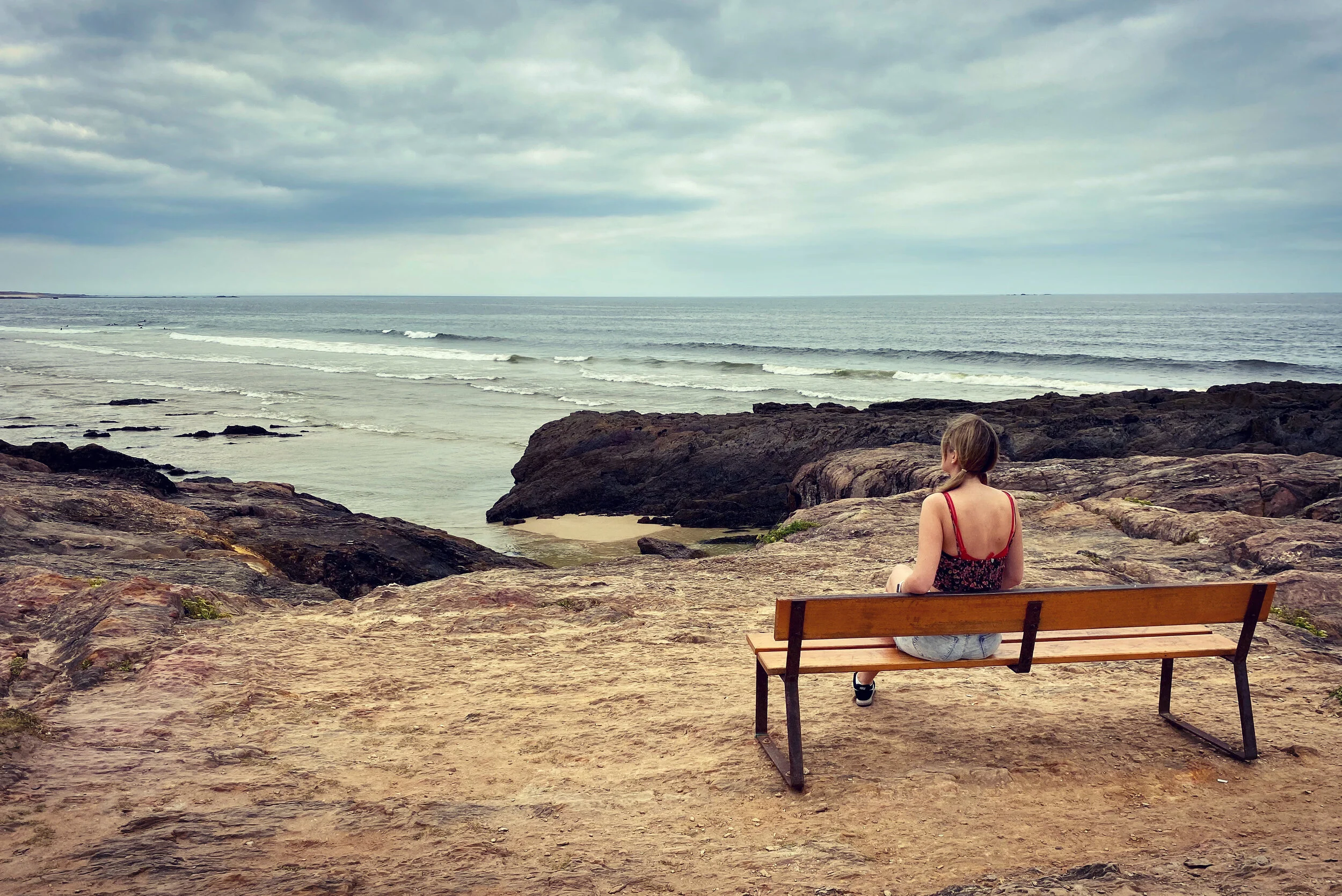A trip to the Peneda-Gerês National Park (Portugal)
Location of the park in the Iberian Peninsula, via wikipedia.
The Peneda - Gerês National Park is a national park located in the north of Portugal bordering the Spanish province of Ourense.
It covers an area of 695.93 km2 (268.70 sq mi). There are 22 rural villages within the park distributed within the towns of Arcos de Valdevez, Melgaço, Montalegre, Ponte da Barca and Terras de Bouro.
Map of the Peneda - Gerês National Park via https://www.descubraminho.com/en/northern-portugal/peneda-geres-national-park
Which are the best places to visit in such a big area? Although we are no experts and have left many spots unexplored, here is a list of the places we’ve visited. I hope you enjoy them as much as we did.
Pincães falls
Pincães falls
To get to these falls, you can leave the car in the village of Pincães and then follow the hiking trail to the waterfall. The trail starts in the center of the town and it is an easy 30 min walk. Don’t be surprised if you encounter some cows blocking the way!
When we got to the falls, it was totally crowded and because of the Covid situation we decided to head back to the car. My significant other didn’t appreciate this place that much, however, I believe it is a beautiful place to swim and if you go early in the morning, you will enjoy it more for sure!
Ponte do Diabo (Devil’s bride) or Ponte da Misarela
Our favourite location in the Gerês National Park
Why didn’t anybody recommend us this place? People kept on mentioning different spots and we discovered this location by mere chance. It is our favorite place within the park so far and you can’t miss it!
Ponte do Diabo or Ponte da Misarela
The Ponte do Diabo - Devil’s bridge - was built in the Middle Ages and it owes its name to a legend in which a runaway asked the devil for help to cross the river. The devil did so by building the bridge in exchange for his soul.
To get there, leave the car in the parking lot near the trail and get ready for a crazy descend. At some point you may even have the feeling that you are rock climbing instead of hiking. The descend is so steep that a rope is attached to the cliff so you can help yourself while climbing down. There are also some iron bars attached to the mountain to use as steps. Once at the bottom, you will be able to stand on the bridge and also find some spots for photography. There is an impressive waterfall by the bridge where the water falls with such a strength I had never seen before. It was truly spectacular.
Santa María das Júnias Monastery
Santa María das Júnias Monastery
This totally isolated and ruined monastery was built in the XII century and it is located in a valley surrounded by rocky mountains. It was abandoned in 1834 and destroyed years later by a fire.
To get there you can take your car to the town of Pitões das Junias and follow the indications to the parking sites nearby. Then, you will have to go on a little hike. The landscape won’t disappoint!
Pitões das Júnias falls
Pitões das Júnias falls
Boardwalk to get to the falls
You can take advantage of your trip to the monastery by hiking to these falls. You will find indications to get to both places within the town Pitões das Júnias. The hike to the falls is a bit crazy. You need to walk down a boardwalk with almost 300 steps. Going down is relatively easy but going up not so much :) At the outlook, we enjoyed the views more than the waterfall itself because you can’t really see it that close.
Montalegre Castle
Montalegre Castle
Inside the castle
The last place we recommend is the town of Montalegre, really close to the border with Ourense, Galicia.
The most interesting thing to visit here is the castle. The oldest part of the castle dates back to 1281. The entrance is totally free and it gives you access to the patio and the towers. From one of the towers you will enjoy great views of the area.
In Montalegre, you can also visit the Ecomuseu de Barroso, where you can learn more about the park and the area. The museum is right next to the castle and it is also free.
Before you leave Montalegre, remember to buy one of the Portuguese traditional pastries known as pastéis de nata. They are our favourite!
WHERE CAN I SLEEP?
We wanted to experience something different so we stayed at Nomad Planet, a unique hotel where you will sleep in yurts, the traditional accommodation of Mongolian nomads.
Yurt used as a living room and kitchen. It is a shared space between the guests,
The hotel is located within the area of the park and the surroundings are breathtaking.
Private yurts used as bedrooms.
You will need to share the bathrooms with the other guests but that wasn’t a problem at all. I’m not a person that enjoys sharing bathrooms, specially with the COVID situation, but they were very clean and comfortable. The only issue was going to the toilet at night. Nights in the Gerês are a bit chilly and you rather stay in your warm bed but it was also a fun experience trying to make your way to the toilet in total darkness and using your phone as a lantern.
We paid 124€ for two nights with breakfast included. Breakfast is served in an old primary school and it includes coffee, tea, orange juice, toast, a type of Portuguese homemade pancakes and a yogurt.
This place is in the middle of nowhere, with incredible views to the Gerês National Park so it t isolated and there is no wifi. Disconnection is guaranteed.
TIPS
To visit the park, you are going to need a car because the interesting places are far away from each other. Once in the location you choose to visit, get ready for some hiking since the hot spots are always into the wild.
Make sure to bring water and snacks with you. There aren’t a lot of supermarkets or shops nearby. The area is very rural. However, you will find some restaurants to enjoy the local food. The cod fish -bacalhau- is always a good choice in Portugal.
If you are a person that prefers the city, this plan is not for you. There aren’t any big cities around and the small towns don’t have a lot of facilities.

